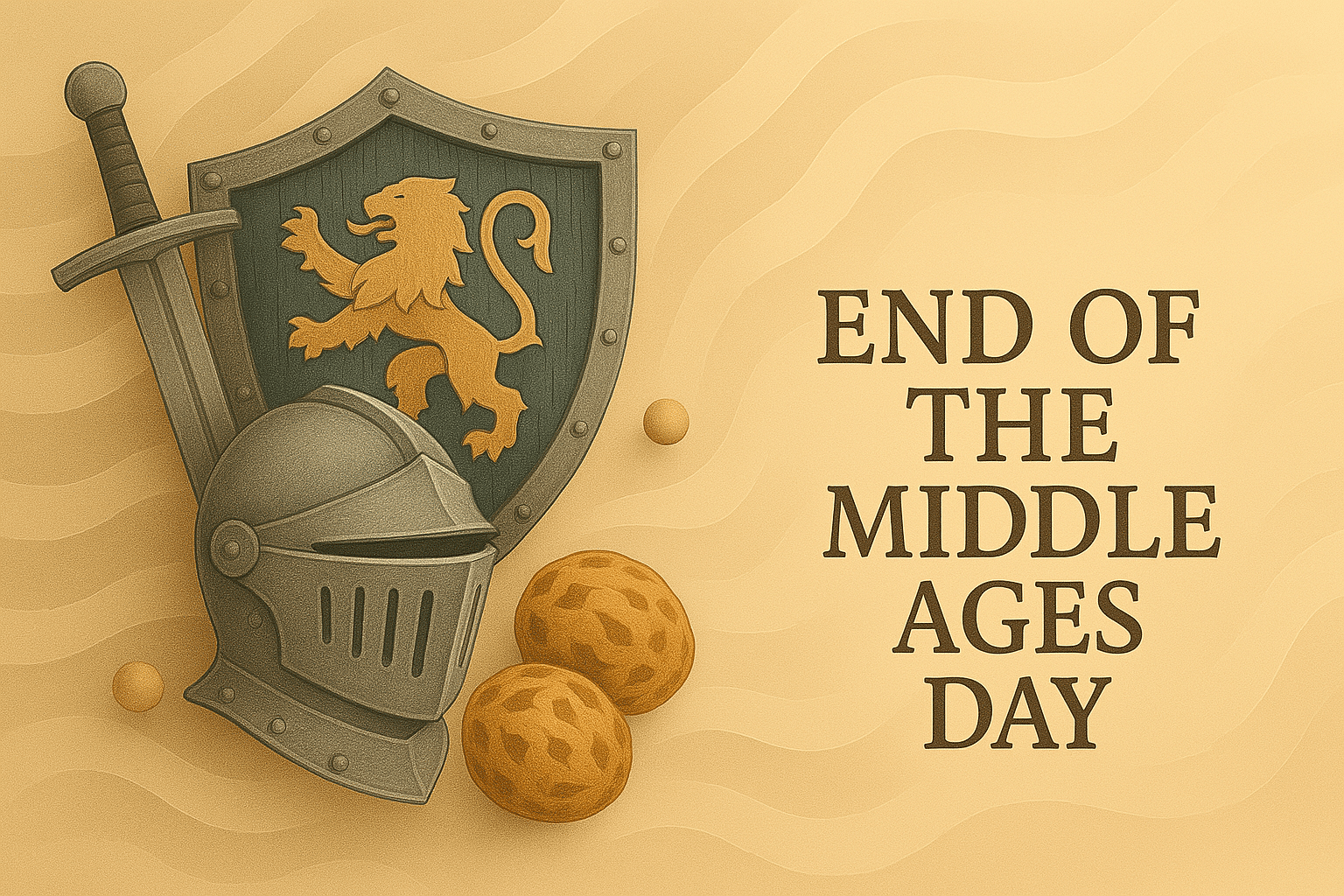What is End of the Middle Ages Day?
End of the Middle Ages Day is observed every year on May 29. The day marks the fall of Constantinople in 1453, a key event that many historians consider the symbolic end of the medieval period and the start of the Renaissance.
It’s a moment to reflect on the shift from feudal society to early modern Europe. The fall of the Byzantine capital reshaped political, religious, and cultural life across the continent and signalled the beginning of a new era of exploration and knowledge.
History and Origin
The Middle Ages, or medieval period, spanned roughly from the fall of the Western Roman Empire in 476 until the late 15th century. It was a time shaped by feudalism, religious dominance, limited scientific advancement, and devastating events like the Black Death.
On May 29, 1453, Ottoman forces led by Sultan Mehmed II conquered Constantinople after a long siege. This event ended the Byzantine Empire and gave rise to the Ottoman Empire’s dominance. The fall of the city also pushed many Greek scholars to flee westward, bringing with them ancient texts and ideas that would fuel the European Renaissance.
Though not an official holiday, End of the Middle Ages Day is recognised by history enthusiasts, educators, and cultural organisations as a moment of transition;an invitation to consider how one day can symbolise the close of an entire age.
Who Participates in End of the Middle Ages Day?
- Historians and researchers: Reflect on the cultural and political changes surrounding the fall of Constantinople.
- Teachers and students: Study the shift from medieval to modern Europe through lectures, projects, or classroom debates.
- Museums and libraries: Share exhibitions or resources related to the Byzantine Empire, the Ottomans, or the Renaissance.
- Writers and media creators: Produce content that explains or imagines life at the turning point of 1453.
- Curious individuals: Explore history podcasts, documentaries, or books about this transformational period.
Slogans and Themes
Themes include transition, discovery, and rebirth. The day is often linked with ideas like “The End of an Era,” “From Faith to Reason,” and “When the Old World Fell.” These messages highlight how sudden changes in power or culture can spark widespread evolution in art, politics, and knowledge.
Colors symbols and patterns
Colors
- Dark red: Represents the fall of empires and the bloodshed of war.
- Gold: Symbolises the wealth of Constantinople and the brilliance of Renaissance ideas.
- Stone grey: Evokes medieval cities, fortresses, and ruins.
Symbols
- City walls: Represent the fall of Constantinople and the breakdown of barriers.
- Scrolls or books: Symbolise the transfer of classical knowledge into the West.
- Flaming torches: Suggest the dawn of enlightenment and the passing of eras.
Patterns
- Broken arches: Used in designs to reflect the fall of empires and transitions in architecture.
- Star motifs: Represent navigation, science, and the age of exploration.
- Mosaic textures: Refer to Byzantine art and the layered history of Europe.
Most Used Hashtags
- #EndOfTheMiddleAges
- #FallOfConstantinople
- #MedievalHistory
- #RenaissanceBegins
- #May29
How to Celebrate End of the Middle Ages Day:
- Read medieval and Renaissance texts: Explore the ideas that shaped Europe before and after the fall of Constantinople.
- Watch a documentary: Learn about the siege of 1453 or the history of the Byzantine Empire.
- Visit a museum: Discover medieval artifacts or artworks that tell the story of a changing world.
- Discuss with others: Host or join a conversation about historical turning points.
- Reflect on change: Use the day to think about transitions in your own life and in society.
Why is End of the Middle Ages Day Important?
History rarely moves in straight lines. But some moments define everything that comes after. The fall of Constantinople on May 29, 1453 is one of those moments. It closed a thousand-year chapter and opened the door to a new world of science, global trade, humanism, and exploration.
End of the Middle Ages Day helps us understand how cultural shifts happen. It shows that great change often comes from loss, and that learning from the past can help shape the future.
Features
May 29: End of the Middle Ages Day
Why do you keep falling for the same type?
Read the article Lovemaps: the hidden blueprint of our love.

